Discover Creamy Burrata Cheese: A Taste of Italy
When I opened the white sphere, a scent of fresh cream and mozzarella filled the air. It was like a call to explore. Burrata cheese, a treasure from Italy, has won the hearts of many. Its creamy inside and soft outside make it a standout cheese.
This guide is for both cheese lovers and newcomers. It will show you the history, types, and uses of burrata. Let’s explore this Italian gem and see why it’s called the “queen of cheeses.”
Table of Contents
What is Burrata Cheese?
Burrata cheese is a unique and delightful Italian specialty. It has won the hearts and palates of cheese lovers everywhere. This creamy delicacy comes from the southern region of Puglia, showcasing the art of cheesemaking.
Burrata: The Buttery Cheese from Puglia
Burrata is a fresh, soft cheese made from mozzarella and cream. Its outer shell is a thin layer of mozzarella. Inside, it has a rich, creamy interior filled with stracciatella (a mix of mozzarella shreds and fresh cream).
This special construction makes burrata stand out. It has a remarkable texture and flavor, unlike its cousin, mozzarella.
Mozzarella vs Burrata: Understanding the Difference
Mozzarella is a semi-soft, elastic cheese. Burrata, on the other hand, has a richer, more indulgent texture. It also has a slightly tangy taste that balances the sweet creaminess of its filling.
Burrata’s unique structure, with its buttery interior in a delicate mozzarella shell, offers a unique cheese experience.
| Characteristic | Mozzarella | Burrata |
|---|---|---|
| Texture | Semi-soft, elastic | Rich, creamy interior |
| Flavor | Mild, slightly sweet | Slightly tangy, balanced creaminess |
| Origin | Southern Italy | Puglia, Southern Italy |
| Shelf Life | Longer | Shorter (1-2 days) |
The Origins and History of Burrata Cheese
Burrata cheese comes from Puglia, southern Italy. It was made over a century ago. The recipe used cow’s milk, rennet, and cream, shaped into its unique form.
It quickly became popular in Puglia and then Italy. Burrata is now a favorite in Italian cuisine.
Getting burrata known outside Puglia was tough. It was seen as a luxury in the 20th century. But, in the early 2010s, it became famous in LA and worldwide.
Today, burrata is still made in Puglia with old methods. Family farms there are famous for their burrata. It’s now loved all over the world.
“Burrata has evolved from a simple traditional dish in Puglia to being part of elaborate culinary creations worldwide.”
The story of burrata cheese starts in the early 1900s. Some say it was made as early as 1956. Traditionally, it was wrapped in asphodel leaves to show freshness.
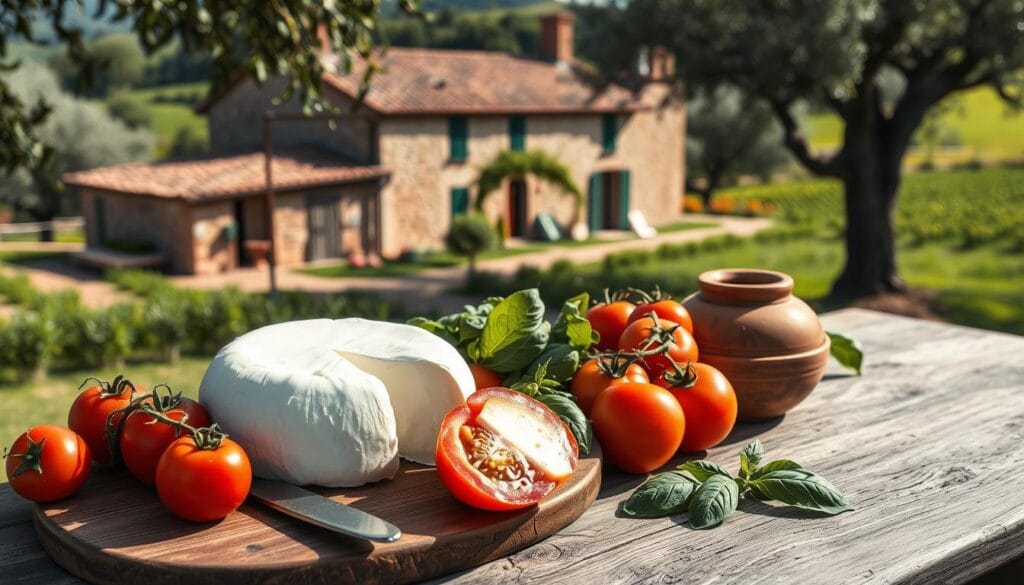
Burrata has grown from a local treat to a global favorite. It’s now on menus everywhere, even with fancy toppings. Its history and traditional making make it special in Italian food.
Types of Burrata Cheese
The classic burrata is made from cow’s milk. But, there are many regional variations. One is the buffalo burrata, made with water buffalo milk. It’s creamier and has a tangier taste.
In southern Italy, you’ll find provola and burrito. These cheeses are stuffed with butter or cream, like burrata. They offer different textures and tastes for cheese lovers.
Buffalo Burrata: A Creamy Delight
The buffalo burrata is a special version of the classic cheese. It’s made with water buffalo milk, giving it a creamier texture and a tangier taste. It’s a treat for your senses.
Regional Varieties: Provola and Burrito
Puglia and Calabria in southern Italy have their own regional burrata types. Provola and burrito are filled with butter or cream, just like traditional burrata. They show how versatile burrata can be.
These cheeses let cheese lovers try different flavors and textures. They’re part of the rich world of italian cheese varieties.
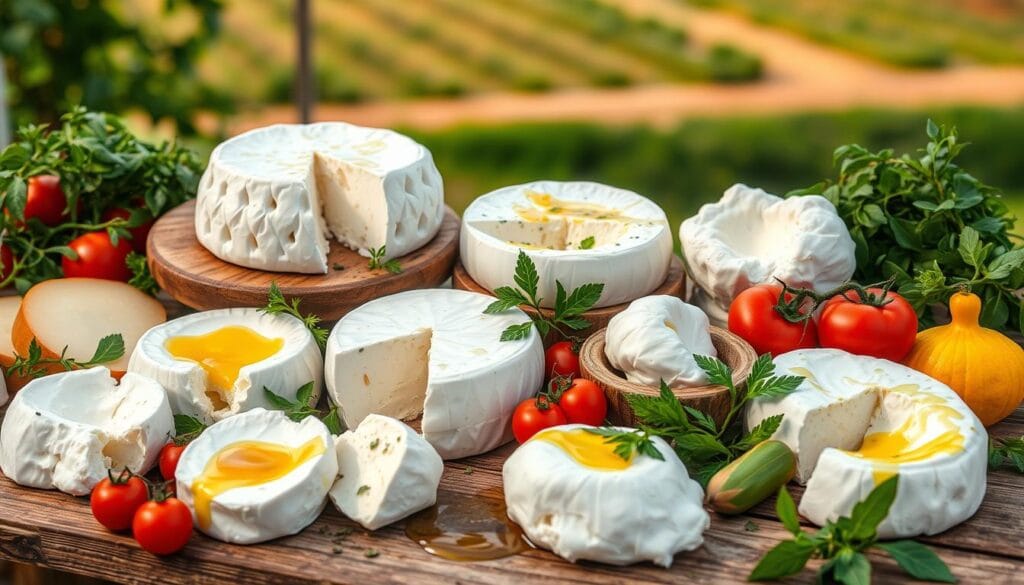
burrata cheese
To enjoy fresh burrata at its best, eat it soon after it’s made. Its burrata shelf life is short, so quality drops quickly. It’s best to eat it within a day or two.
Keeping burrata chilled and safe from outside factors is key. When you serve it, let it come to room temperature. This lets its flavors fully come out, making for a rich burrata serving experience.
| Burrata Cheese Statistics | Value |
|---|---|
| Preparation Time | 30 minutes |
| Servings | 4 people |
| Calories per Serving | 420 |
| Carbohydrates per Serving | 12.2g |
| Protein per Serving | 13.3g |
| Fat per Serving | 38g (5.9g saturated) |
| Sodium per Serving | 937.3mg |
| Fiber per Serving | 1.7g |
| Sugar per Serving | 2.8g |
Burrata cheese is packed with potassium, good for your heart and blood pressure. It’s creamier than mozzarella because of its mix of cow’s milk and cream.

Enjoy fresh burrata on a salad, with prosciutto, or with warm bread and red wine. The goal is to enjoy it at its best. With the right storage and burrata serving, you’ll get the most out of this Italian treat.
Serving and Pairing Burrata Cheese
Burrata cheese is known for its delicate flavors and creamy texture. It pairs well with many ingredients. A favorite is the caprese salad, with fresh burrata cheese, juicy tomatoes, fragrant basil, and extra virgin olive oil. It also goes well with prosciutto, balancing flavors.
You can enjoy burrata cheese on its own or with bread. It’s also great in pizza and pasta for a creamy touch. The ways to serve and pair burrata are endless.
Classic Pairings: Tomatoes, Prosciutto, and Olive Oil
The caprese salad is a top choice for burrata cheese. It combines creamy burrata, juicy tomatoes, and basil with extra virgin olive oil. For a twist, try it with prosciutto for a mix of textures and tastes.
“Burrata’s delicate flavors and creamy texture make it a versatile ingredient that pairs beautifully with a variety of ingredients.”
Burrata is great as an appetizer, main course, or on a cheese platter. Its versatility lets you explore many flavor and texture combinations. Find your favorite burrata cheese pairings and burrata cheese recipes.
Burrata Cheese Recipes and Dishes
Burrata cheese is great in many dishes, from salads to pasta and pizza. It adds a creamy touch to your meals. Let’s explore how to use it in your cooking.
Salads with Burrata: A Fresh Delight
Burrata cheese is perfect in salads. It goes well with tomatoes, arugula, and citrus. Try a Caprese salad with burrata, basil, and olive oil.
For something more, mix burrata with grilled peaches, prosciutto, and balsamic glaze. It’s a tasty combination.
Burrata on Pizza and Pasta: Creamy Indulgence
Burrata is also great on pizza and pasta. It melts into a rich, creamy layer. It enhances the flavors of other ingredients.
Put burrata on your favorite pizza or mix it into pasta. Try it with linguine, cherry tomatoes, and basil. It’s a creamy delight.
| Ingredient | Percentage |
|---|---|
| Olive oil | 25% |
| Garlic cloves, crushed | 10% |
| Crushed red pepper flakes | 5% |
| Cherry tomatoes | 30% |
| Caster sugar | 5% |
| Salt | 5% |
| Freshly ground black pepper | 5% |
| Linguine | 15% |
| Fresh basil | 5% |
This recipe is quick, taking just 15 minutes. Mozzarella is a good substitute for burrata. For a burrata hack, mix 250g mozzarella, 100ml double cream, and 1/4 teaspoon salt.
“Burrata’s creamy, indulgent nature makes it a beloved addition to a wide range of dishes, from light and refreshing salads to comforting pasta and pizza creations.”
Appetizers and Cheese Platters with Burrata
Burrata’s creamy texture makes it perfect for fancy appetizers and cheese platters. Alone, it’s a treat with sea salt and olive oil. Or, pair it with bread, meats, and fruits for a stunning board.
Burrata fits well in many appetizers and cheese platters. It’s great for dinner parties or cocktail gatherings. Your guests will love it.
Burrata Cheese Boards
Creating a burrata cheese board is a great idea. It’s a platter with creamy burrata and other tasty items. Classic pairings include:
- Crusty bread or crostini
- Cured meats like prosciutto or salami
- Fresh or roasted vegetables, such as tomatoes, olives, or roasted squash
- Fruit, such as figs, pears, or apricots
- Herbs, such as basil or rosemary
- Nuts or seeds, such as candied pecans or pomegranate seeds
- Drizzles of high-quality olive oil and balsamic vinegar
A burrata cheese board is a feast for the eyes and taste buds. It highlights the cheese’s creamy texture and pairs it with various flavors and textures.
Burrata Appetizers
Burrata is also great in appetizer dishes. Try burrata with bread for a simple yet delicious option. Or, pair it with cured meats for a flavorful mix.
For something more, add burrata to appetizers with roasted veggies, pesto, or balsamic reduction. It’s a versatile cheese that can be used in many ways.
| Preparation Time | Cooking Time | Serves |
|---|---|---|
| 10-15 minutes | 20-25 minutes | 2-3 |
Adding burrata to your appetizers and cheese platters will make your guests’ dining experience unforgettable. It’s a taste of Italy they’ll love.
The Burrata Cheese-Making Process
Making burrata cheese is a detailed process that needs great skill. It starts with fresh cow’s milk mixed with cream, rennet, and citric acid. This mix begins the curdling process.
The curd is then separated from the whey. It’s hand-stretched and shaped into a pouch. Inside this pouch, a creamy mix of cheese curds and fresh cream is placed, making the burrata center.
From Milk to Masterpiece: Crafting Burrata
Making burrata cheese is a labor of love, taking 2 to 4 hours. The milk is heated to 30 to 40 degrees Celsius. Rennet is added, and the milk sets for 30 to 40 minutes.
The curds are heated to 120 degrees Fahrenheit. They are then hand-stretched and shaped into a pouch. The cheese is filled with a creamy mix and cooled to keep it fresh.
“The original recipe for Burrata cheese has remained unchanged for approximately one hundred years, reflecting the timeless artistry of this Italian delicacy.”
Burrata can be made from cow or water buffalo milk. The latter gives a richer, creamier texture. The cheese is packaged with a protective layer to keep it fresh. It’s best eaten within 24 hours for the best flavor.
The burrata cheese-making process is detailed. Each piece is a masterpiece, showing the artisan’s passion and skill. From selecting the milk to the hand-stretching and filling, every step is important.
| Key Burrata Cheese-Making Facts | Details |
|---|---|
| Average time to make Burrata | 2 to 4 hours |
| Milk heating temperature | 30 to 40 degrees Celsius |
| Time for milk to set after adding rennet | 30 to 40 minutes |
| Curds heating temperature | 120 degrees Fahrenheit |
| Burrata’s origin | Andria in Murgia, Southern Italy |
| Burrata’s best-by time | Within 24 hours |
Burrata: A Unique Italian Cheese
Burrata is a cheese that really stands out in Italy. It’s similar to mozzarella in texture and taste, but it’s special in its own way. Its creamy inside and tangy flavor make it unique.
Unlike mozzarella, burrata has a soft outside and a rich inside. This mix of textures and tastes makes it a favorite among cheese lovers.
Comparing Burrata to Other Cheeses
Burrata is a cheese like no other in Italy. It has a thicker, creamier texture than mozzarella, often called “buttery.” Its filling is rich and velvety.
Its taste is also more complex than mozzarella. Burrata has a tangy flavor that’s both nuanced and delicious.
Burrata is different from other Italian cheeses too. Its creamy center and layered structure make it a standout. It’s known as the “Queen of Italian Cheeses” for its indulgent qualities.
FAQ
Q: What is burrata cheese?
A: Burrata is a fresh, soft Italian cheese. It’s made from mozzarella and cream. The outside is thin mozzarella, and inside, there’s a creamy mix of mozzarella and fresh cream.
Q: How is burrata different from mozzarella?
A: Burrata is creamier and has a tangy taste. Mozzarella is semi-soft and elastic. Burrata’s filling makes it richer and more indulgent.
Q: Where does burrata cheese originate from?
A: Burrata comes from Puglia, a southern Italian region. It was created over a century ago.
Q: What are the different types of burrata cheese?
A: Classic burrata is made from cow’s milk. But there’s also buffalo burrata. It’s made from water buffalo milk and tastes creamier and tangier.
Q: How should burrata cheese be stored and served?
A: Keep burrata chilled and eat it within a day or two. Serving it at room temperature lets the flavors shine.
Q: What foods pair well with burrata cheese?
A: It goes great with juicy tomatoes, fragrant basil, cured meats, and olive oil. These ingredients complement its creamy texture.
Q: How is burrata cheese used in cooking and recipes?
A: Its creamy texture makes it versatile. Enjoy it in salads, on pizza and pasta, or as a standalone appetizer.
Q: What is the process of making burrata cheese?
A: Making burrata is a detailed process. It involves hand-stretching the mozzarella pouch and filling it with a creamy mix of cheese curds and fresh cream.
Q: How does burrata compare to other Italian cheeses?
A: Burrata is similar to mozzarella but has a richer, creamier interior. Its tangy taste adds a unique flavor and texture contrast.
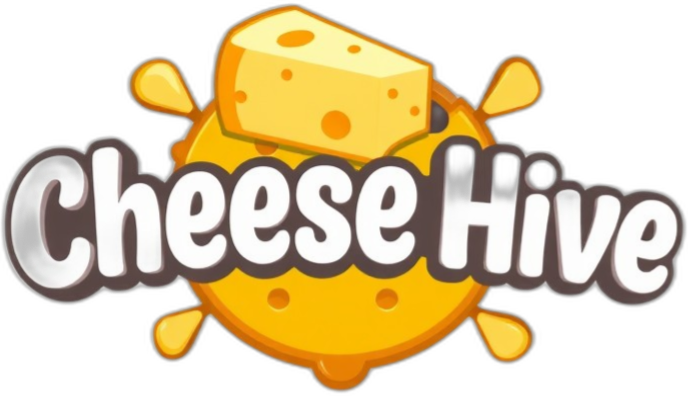

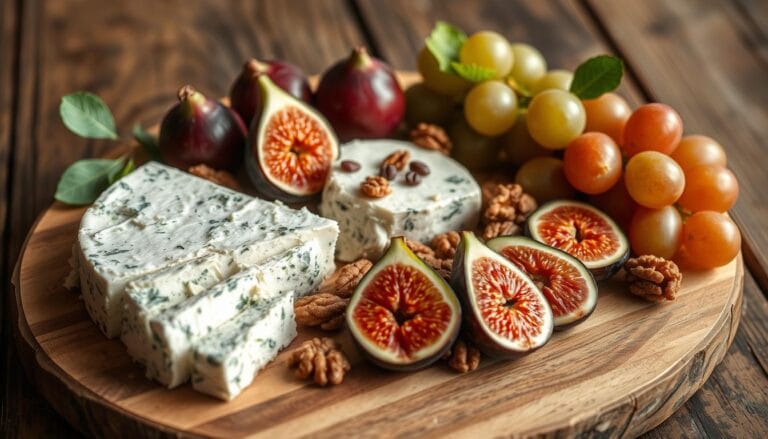
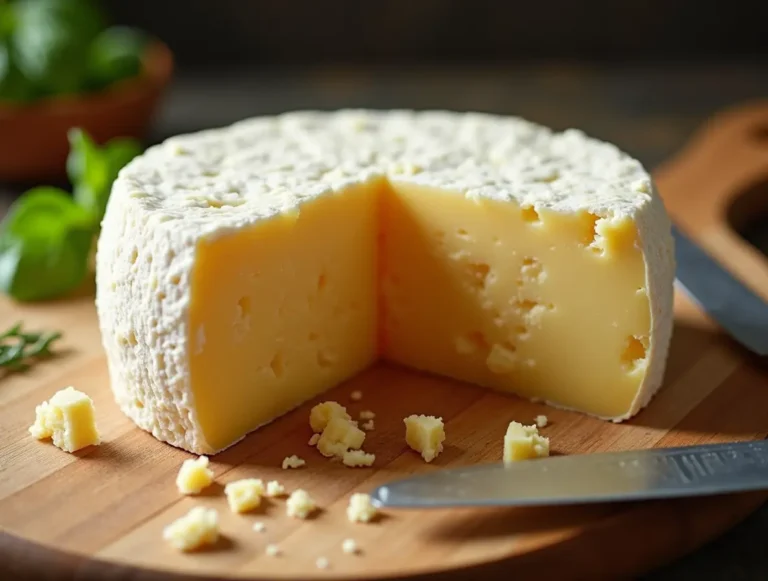
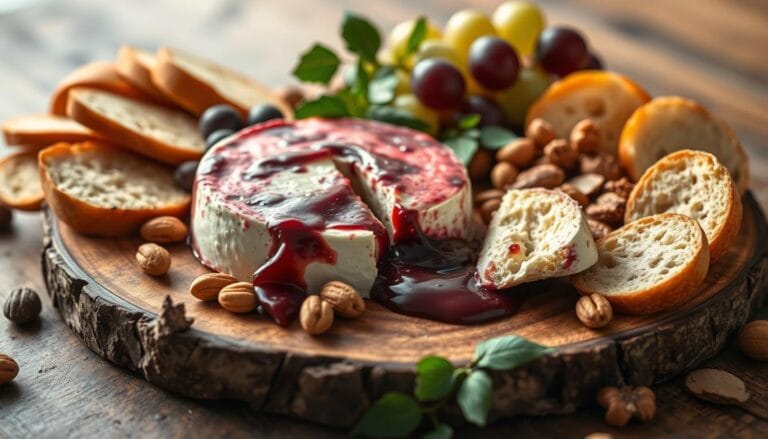
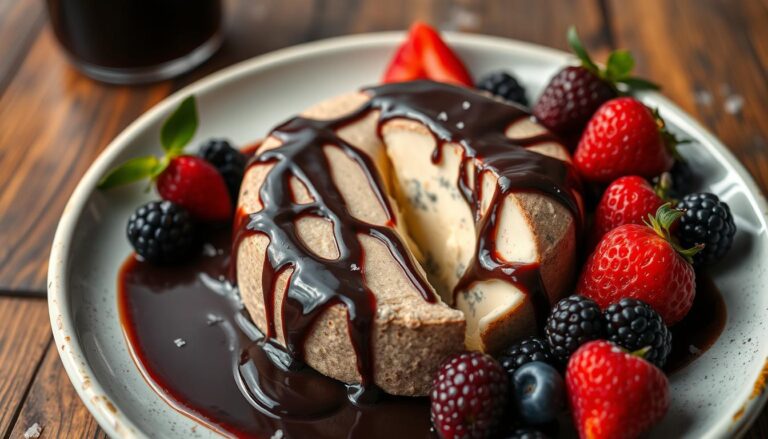
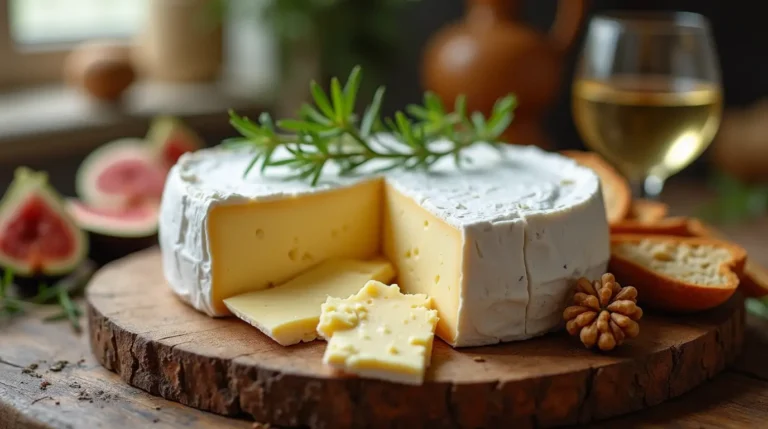

One Comment
Comments are closed.